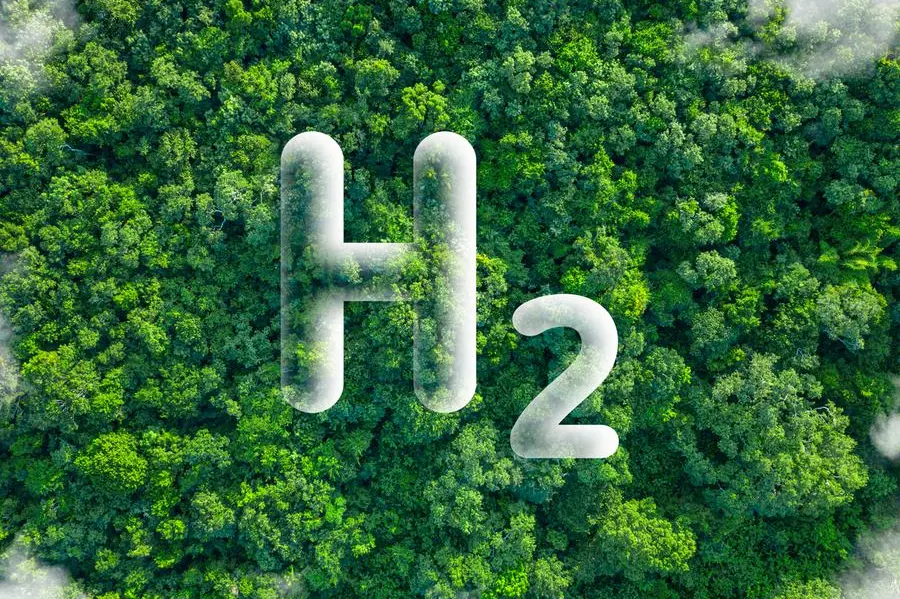PHOTO
South Africa has embarked on a green energy venture. Image used for illustrative purpose. Getty Images
South Africa has embarked on a green energy venture with the initiation of a $1bn blended finance fund, the SA-H2 fund, aimed at propelling the growth of the green hydrogen sector. This move places the nation on a promising path to exploit this renewable energy resource.
The fund is backed by a consortium of strategic partners including Climate Fund Managers (CFM), a firm focused on climate-centric finance, Invest International of the Netherlands, financial services group Sanlam, the Development Bank of Southern Africa, and the Industrial Development Corporation (IDC).
As of November 2022, the government gazette listed 20 green hydrogen projects, with nine recognised as strategic integrated projects. The SA-H2 fund is anticipated to accelerate the development and execution of these projects, creating new employment opportunities in the process.
However, to fully reap the benefits of green hydrogen, stakeholders must fulfil three crucial prerequisites.
1. Improve knowledge, design, and engineering results
The path towards efficient green hydrogen production and utilisation is paved with new technologies and new thinking. Also, many individuals still lack the necessary training and skills needed to support the hydrogen economy.
Integrated engineering, using a digital twin and process modelling, are key technology solutions that can assist with simulations optimised for training and scenario planning whilst also creating a virtual representation for production and design.
In comparison to other renewable energy resources, the production and use of hydrogen is still quite inefficient. According to the International Energy Agency (IEA), more than 99% of dedicated hydrogen production is currently based on fossil fuels, the steam reforming of natural gas and coal gasification.
Getting on track with the Net Zero objectives requires the rapid scale-up of low-emission hydrogen, which leads to a remarkable increase in electricity demand in the short term.
The good news is that an estimated $500bn will be spent on development of hydrogen projects over the next decade of which approximately 70% will target green hydrogen production. This investment is expected to push low-carbon hydrogen production capacity beyond 10 million metric tons annually by 2030.
2. Safety and efficiency for improved operations
While hydrogen is a not a toxic gas, it is still a highly flammable and complex to de-risk. Moreover, the severity and frequency of damage related to hydrogen, for example, is dependent on the extent to which the gas has been blended with other materials.
In short, hydrogen should be consistently monitored through a combined safety, power, and process control system. On top of the safety regulations needed during production, the massive consumption of power for green hydrogen production also makes power efficiency critically important.
Tools like predictive analytics and advanced process control can help producers achieve maximum plant uptime and efficiency. Popular technology tools like artificial intelligence (AI) and machine learning (ML) also help to improve analytics for optimised asset performance.
Digital twin technology, combined power and process control system, integrated safety and predictive analytics should be considered by green hydrogen developers as must-have solutions.
3. Requirements for green certification
It is likely that in some cases producing renewable energy close to the green hydrogen production facility may not be possible. Also, there may be some independent renewable energy producers that want to sell their produced energy to green hydrogen producers.
Here, the power will be transmitted to the green hydrogen production facility through the grid. When grid power is used for green hydrogen production, it becomes important for the producer to know, as well as make available to the hydrogen users, that the produced hydrogen is generated from green electrons.
This certification will be necessary when applying for green hydrogen rebate from authorities. A record of transactions using systems such as blockchain will provide a feasible solution to obtain these certifications and this will have to be adopted by power utility companies, hydrogen producers and the users.
All rights reserved. © 2022. Bizcommunity.com Provided by SyndiGate Media Inc. (Syndigate.info).




















